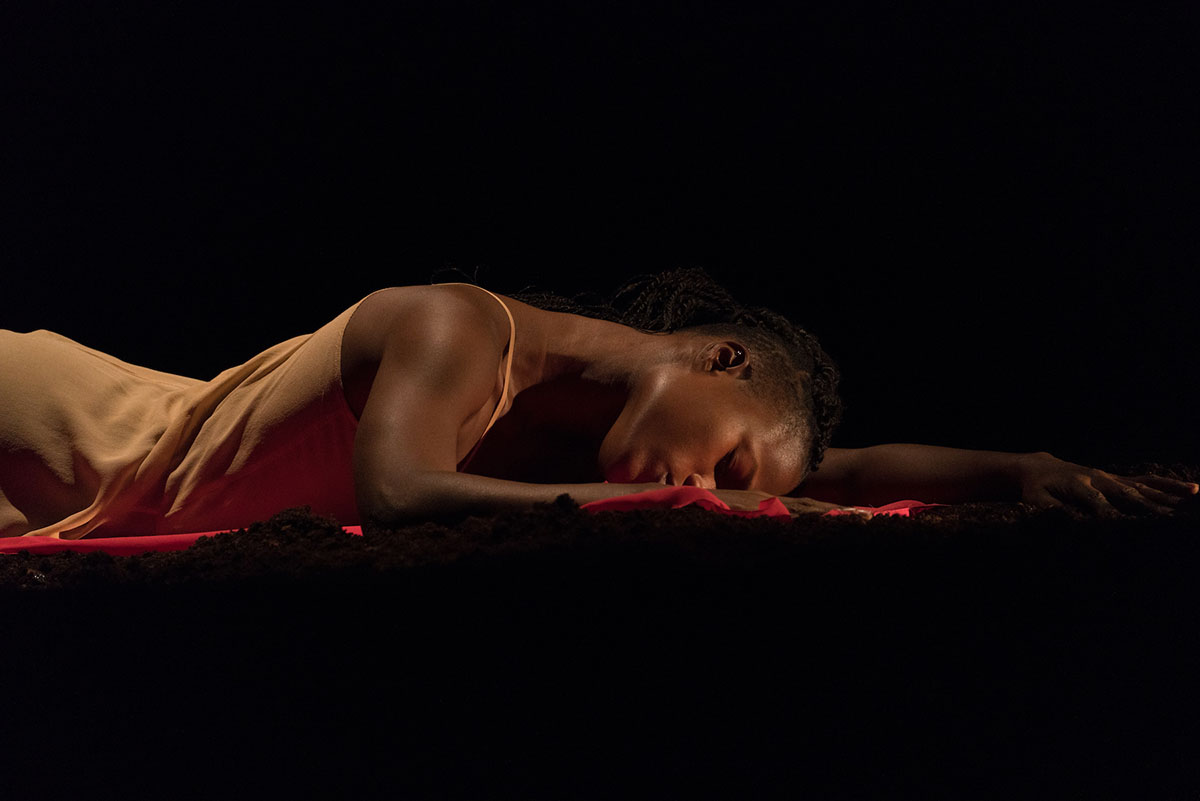
The Rite of Spring: What Does it Mean to Sacrifice?
By Heather Desaulniers
35 dancers, representing 14 African countries perform Pina Bausch’s rendering of the masterpiece at Cal Performances
Society. Springtime. Sacrifice. There may be no other dance drama that sees these three themes intersect, converse and entwine than the famed "The Rite of Spring." Scored by Igor Stravinsky, choreographed by Vaslav Nijinsky and performed by Sergei Diaghilev’s Ballets Russes, it debuted over one hundred years ago in 1913, and since that time, the haunting saga has inspired adaptation after adaptation. Countless depictions of a ‘chosen one’ dancing themselves to death to shield and secure the larger collective. In 1975, German choreographic and artistic visionary Pina Bausch took on Rite’s potent narrative and created a new version for her company Tanztheater Wuppertal. This February, local audiences are invited to bear witness to that epic masterwork, as Cal Performances presents its Bay Area premiere. While it may technically be winter when Bausch’s "Rite of Spring" arrives in Berkeley, the production promises all the transformation and metamorphosis that comes with spring. And it will compel the viewer to think critically about the word sacrifice.

Pina Bausch's The Rite of Spring. Image credit: Maarten Vanden Abeele
For Co-Artistic Directors Clémentine Deluy and Jorge Puerta Armenta, this particular re-mounting of Rite (which saw its first tours back in 2021) has been laden with newness, keeping Bausch’s work vital, fresh and alive. First was the new process of casting. “Rather than setting the piece on an existing dance institution, there was an open call for dancers from the African continent,” Armenta explains, “the call did not name any specific technique, so we had the unique opportunity to see dancers who trained in different movement styles, whose physical vocabulary had its own lineage and dialect.” Approximately 200 performers applied, auditioning by video, and from that applicant pool, 35 dancers, representing 14 African countries, were chosen for Rite’s cast. “How special to share the beautiful voice of Pina with a new group of dancers, a group with such capacity, open-mindedness and a curiosity to learn,” adds Deluy, “now they are a part of Pina’s legacy - they are the next generation who will transmit her work to others.”
New collaborative relationships have also been forged. To bring Rite to life on world stages, the Pina Bausch Foundation (always with its eye towards overseeing and facilitating the restaging of Bausch’s work) has partnered and continues to partner with two other formidable organizations: Senegal’s École des Sables and the UK’s Sadler’s Wells theater. Two continents coming together so that Bausch’s Rite can have new life in this decade. And that collaboration has only deepened over time and with new performance opportunities. With Rite’s upcoming tour to Charleston, Los Angeles, and of course, Berkeley, the partnership will expand from the European and African continents to North America.
At the same time, new logistical challenges have also come into play, like VISA issues. “The political reality of today is that not all of the artists are able to travel to certain countries, which definitely affects the overall production,” Deluy notes, “everyone who has worked tirelessly with us deserves to travel and unfortunately, sometimes they just can’t.” Occasionally, this VISA difficulty even occurred during the rehearsal process – members of the team being unable to attend rehearsals in person because of where they were being held. In those situations, Zoom and other such technological platforms were utilized. But as we all have learned over the past few years through COVID, it just can’t compare to being in the same room, in the same studio. One of the strongest themes that unfolds during "The Rite of Spring," is the universal community and power of the collective, so any absence, at any point in the process, is felt deeply.
Despite such challenges, the importance of bringing Bausch’s Rite to new audiences is paramount to everyone involved. Deluy is not only excited for viewers to experience it, but also for them to remember it after the fact, “Rite’s movement, its choreography, is a part of Pina’s powerful oeuvre – it’s a force, a treasure that reveals nuanced themes, like the strength inherent in fragility.” Armenta agrees, “Rite isn’t about beauty or correctness; it shows extremes and exhilaration – it’s a journey for every dancer to work through as it demands all that you have from the first moment until the very end.” Yet another example, another thread of sacrifice that is woven into Pina Bausch’s "The Rite of Spring." No doubt this special theatrical occasion will have you contemplating the complicated and complex truth that is sacrifice.
Sharing the evening with "The Rite of Spring" is common ground[s] by Germaine Acogny & Malou Airaudo. Performances run February 16th-18th at Zellerbach Hall on the UC Berkeley campus.
For more information and tickets, please visit calperformances.org



